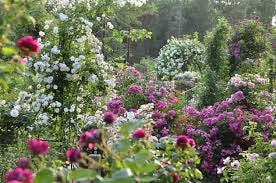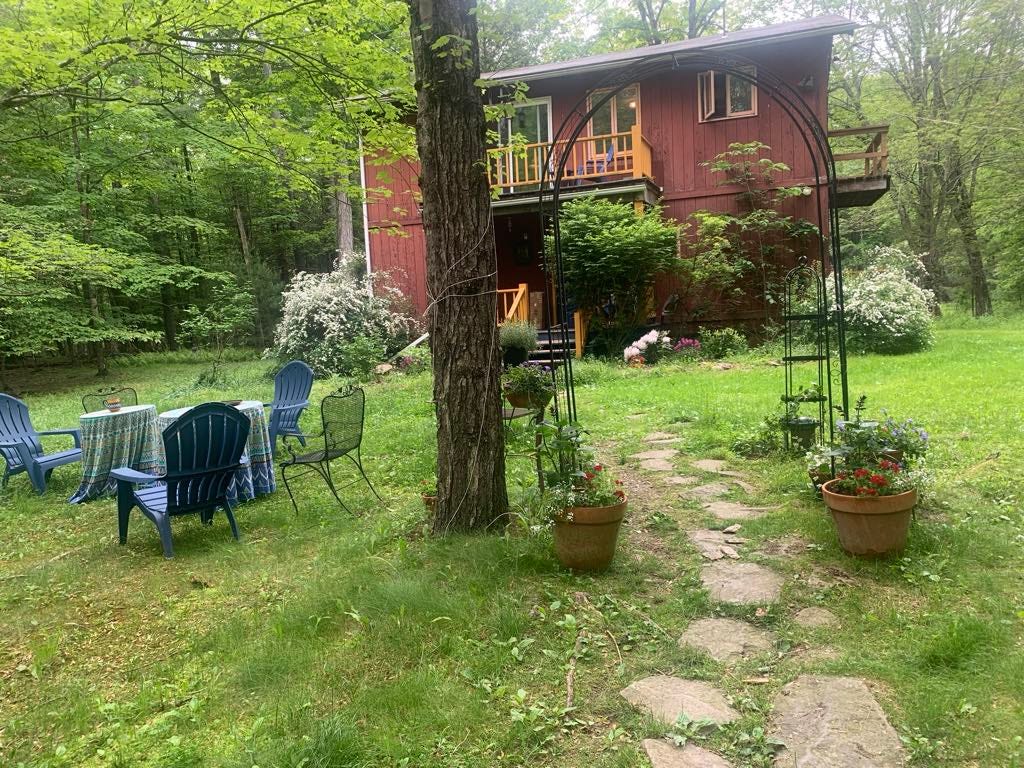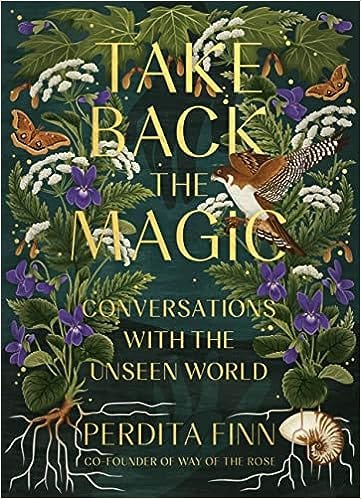We bought our ramshackle mountain cottage 30 years ago and, almost immediately, I began to imagine the garden I was going to plant. My grandmother and my mother had both been devoted gardeners—roses were their speciality but flowers of all kinds bloomed around their homes wafting scent into the air from March to November. They had poured their creativity, their dreams, and their loneliness into the green and growing things that would not betray them.
I, however, did not have a green thumb. Nor did I have a sunny ocean-side property with soft soil and plenty of seaweed for mulch. I lived in the deep shade of the Catskill Mountains where there is famously “two rock for every dirt.” My little house on the side of Mount Overlook was plopped onto the bedrock and the road cut through the woods ended at the front door. I quickly discovered that the only thing that grew easily here were moss and deer. I also discovered how much disposable income those English gardens of my forebears demanded. And time, too, time that as a working mother I did not have. Still, I tried, killing so many annuals and perrenials and bulbs over the years. I dug up stones and built my own crooked path across the caked clay of the driveway. I let most of the driveway fill in with plantain and clover and dandelion. Some years I tried again to plant things. Some years I gave up. Over time, unexpectedly, a few things began to thrive. Last year the lilac finally bloomed after ten years of seeming like it might perish. This year the spirea and the peonies are bursting. The bees are humming through a blue field of forget me knots and adjuga. The bee balm has taken off.
[note: there are no photos of the house 30 years ago when all that is green in this photo was hard-packed clay driveway.]
This past weekend I was puttering out in the front yard—mossy and soft and no longer just a packed down road of stone, loving my crooked path, loving the bees and the finches, loving the shadowed calm. Finally, I have a little more time in my life and a littl more money for the gardening I once dreamed of. I bought and planted a rhododendron, imagining it in a hundred years like the giant bushes outside so many of the local homes. I imagined all the things I might plant that might take too long now for me to ever see come into their own.
None of us know, of course, how much time we have within a single life. I might share my garden with my grandchildren and I might not, them not having been born yet obviously. I also know with a green rooted certainty sitting under the sugar maples and the hemlocks that no gesture today is too small for the life I might live tomorrow.
How much time do any of us have? All the time in the world.
I imagine being a little girl in the garden I have planted and it fills me with delight. I am creating hidden bowers and sancturaries for my mythic grandchildren and also for her, for myself returned.
It is often noted that the builder of the great cathredals had such a profound commitment to their work that they could devote themselves to it even knowing it would never be finished in their lifetimes. But those cathedrals always make me sad—trying so hard to replicate the very ancient old growth forests their construction has necessitated be destroyed.
Let us be gardeners again instead of builders, planting a world we can imagine being reborn into. Not a world of concrete and asphalt, towers and skyscrapers, but a world of soft moss, green things, old trees, and flowers that have finally found their roots. Who knows how long it will take to re-grow this world? We have all the time in the world.
Recently I have sat with a number of people close to transitioning out of this life. They have been beings blessed by friends and family, often with many spiritual resources but little opportunity to talk about the world they are praying to be reborn into. I am not a death doula or have any experience with hospice but I do have an abiding faith in the eternal return. What prayer do you want me to plant with you for your next life? How will I recognize you when you return? What gardening can we do together when you are on the other side of the veil?
To live in the long story of our souls we do not need to leave behind some monument of our specialness for posterity—a building, a foundation, a placque on the wall—but instead we need to plant seeds for the world we really want. We are coming back to that world. This world. The only world. A world grown from our very souls.
It’s never too late to plant those seeds.
Perdita Finn is the author of Take Back the Magic: Conversations with the Unseen World and the forthcoming Mother Spell: Summoning the Love at the Heart of the World. With her husband Clark Strand she is the founder of The Way of the Rose and the co-author of the book of the same name.
She teaches popular workshops on collaborating with the other side. She’ll be teaching online with the Shift Network this summer (Holy Helpers: How an Ancestral Team Can Transform Our Lives), in person (at last!) at Omega in August (Ancestral Magic) and at Kripalu in November (Mother Magic.) She’ll be offering a full slate of online workshops in 2026.
Monthly Magic is a feature of my Paid Substack. It’s an opportunity for community and conversation around our experiences with the other side.








My mother had a green thumb too.I think I must have inherited it from her. Daddy grew great vegetables, but my mother’s thing was flowers. All kinds of them. And she also had some gorgeous rose bushes. One of her most beloved perennials was holly hock. She planted red ones in front of the shed in her later years (for her that was in her late 40s, she died of cancer at 53). Daddy was desperate for a sign after she died. When he went out one clear starry night, he looked up and begged, “Martha, give me a sign.” And right away there was a shooting star. But he wasn’t convinced, though Nanny (his mother) and I were. She died in August. That year the yellow roses she planted all along the fence next to the driveway bloomed ferociously until deep frost. Then the next year, Daddy was mowing the lawn and noticed a hollyhock coming up. Far from the ones she had planted. It grew tall, and the blooms were big and gorgeous and white! I remember saying to my father: Daddy, Mommy planted that for you. You know that, right? And he nodded.
The Haudenosaunee follow the Seven Generations Principle in decision making, which is to see how any decision will affect a family or group seven generations from now. To consider that we are our seventh generation (or could be) makes this principle even more profound. It is at once a selfless act and a selfish one. I think it is in seeing both as true is where awe lives.
See more about the Seven Generations Principle: https://grandmothersvoice.com/seven-generations-nurturing-a-sustainable-future/